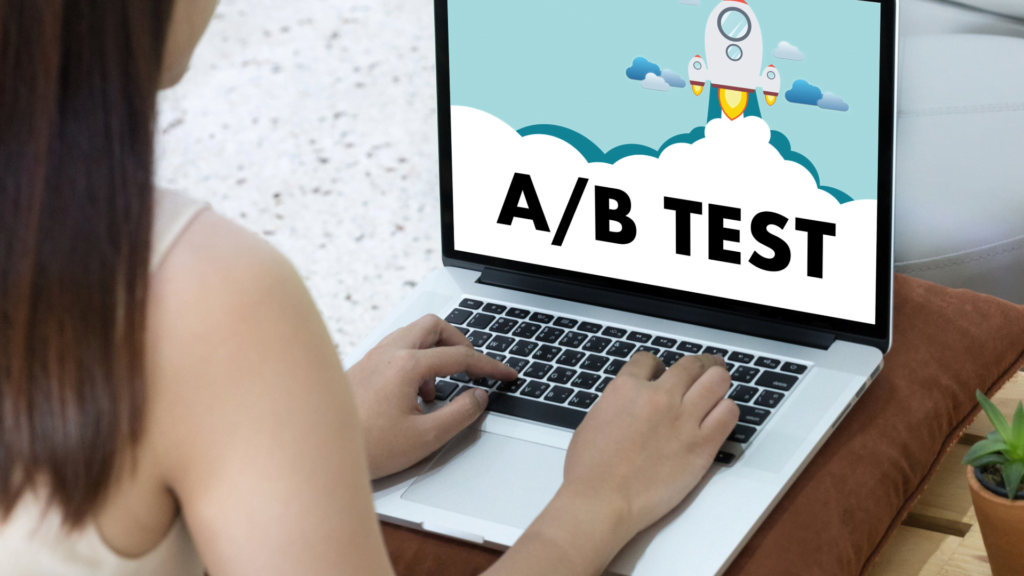Introduction
In the ever-changing world of digital advertising, making data-driven decisions is critical to the success of any campaign. A/B testing is a highly efficient strategy for optimizing ad performance. This strategy enables marketers to evaluate several versions of an ad to see which one works best, ensuring that the final version is as successful as possible. In this article, we will look at the relevance of A/B testing in ad campaigns, its advantages, and critical aspects to test, how to do A/B testing, typical pitfalls to avoid, real-world examples, and the tools and resources available to help you get started.
What is A/B Testing?
A/B testing, commonly known as split testing, compares two versions of an advertising to see which one works better. This entails developing two variations: a control (A) and a variation (B). Marketers may determine whether version is more effective by running both versions at the same time and monitoring their performance using preset metrics such as click-through rates, conversion rates, and engagement levels.
For example, if you are testing an ad for a new product, version A may have a different title than version B. By evaluating performance data, you may learn which headlines connect more with your target audience, allowing you to optimize your ad text for greater success.
Benefits of A/B Testing
Data-Driven Decesions: A/B testing enables marketers to make educated decisions based on actual facts, rather than intuition or speculation. This results in more effective marketing campaigns and improved budget allocation.
Improved ROI: A/B testing increases the return on investment by identifying the most effective ad pieces. Ads that work well result in larger conversions and, eventually, bigger income.
Enhanced User Experience: A/B testing enables advertisers to determine what connects with their target demographic, resulting in a more tailored and engaging user experience.
Risk Mitigation: Testing several versions of an ad on a smaller scale allows you to spot possible difficulties before launching it on a larger scale. This lowers the likelihood of launching an unsuccessful or badly accepted campaign.
Ad copy: Test alternative headlines, body content, and call-to-action phrases to discover which ones increase engagement and conversions.
Visual Elements: Experiment with different pictures, movies, and color schemes to see which visual components draw the audience’s attention and increase interaction.
Target Audience: Test several demographic groupings to see which audience segments respond best to your advertisements.
Ad Placement: To determine the most successful placements, compare the effectiveness of advertising on various platforms and places within those platforms.
Timing: Test commercials at various times of day and on different days of the week to determine the best periods for ad effectiveness.
Set Clear Goals: Define the objectives of your A/B test. Do you want to boost click-through rates, conversions, or engagement? Having specific goals can help guide your testing approach.
Develop Hypotheses: Create assumptions about what you anticipate to find. For example, you may predict that a video ad will outperform an image ad.
Create Variations: Create several variations of the advertisement based on your hypothesis. Make sure the variants are unique enough to yield relevant findings.
Run the test: Implement the test by presenting the control and variation to distinct audience segments at the same time. Ensure effective data gathering in order to correctly measure performance.
Analyze Results: Use statistical approaches to decide the winning version. Look for major variances in performance indicators while determining the most effective ad.
Implement Changes: Apply the findings of your A/B test to your advertising strategies. To maintain peak performance, test and tweak your adverts on a continuous basis.
Common Mistakes to Avoid
Testing Too Many Variables at once: Keep tests basic and focused by testing only one variable at a time. This makes it easy to link performance changes to specific causes.
Short Test Duration: Make sure your test runs long enough to get substantial data. Short testing may produce unreliable findings.
Ignoring Statistical Significance: Make sure the results of your A/B test are statistically significant. This implies that the observed differences are unlikely to be attributable to chance.
Not Iterating: A/B testing is a continuous process. To keep up with market developments and audience preferences, test and adjust your ad campaigns on a regular basis.
Tools and Resources for A/B testing:
- Google Optimize :is a free tool that connects with Google Analytics to let you run A/B testing on your website and adverts.
- Optimizely: is a popular A/B testing software with sophisticated functionality for designing and evaluating experiments.
- VWO (Visual Website Optimizer): An easy-to-use application for creating and running A/B tests without coding experience.
- HubSpot has built-in A/B testing capabilities for email campaigns and landing sites.
Conclusion
A/B testing is a useful technique for increasing the efficacy of your advertising initiatives. A/B testing guarantees that your advertising are optimized for success by allowing you to make data-driven decisions, increase ROI, and improve the user experience. Begin integrating A/B testing in your campaigns immediately to realize their full potential.
To know more about us: Adliftmedia
Contact us for our services and more: Adliftmedia






